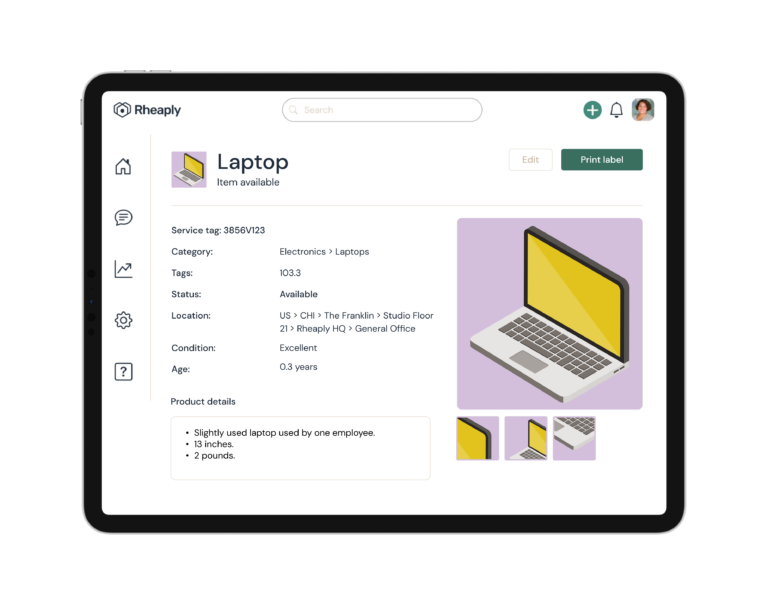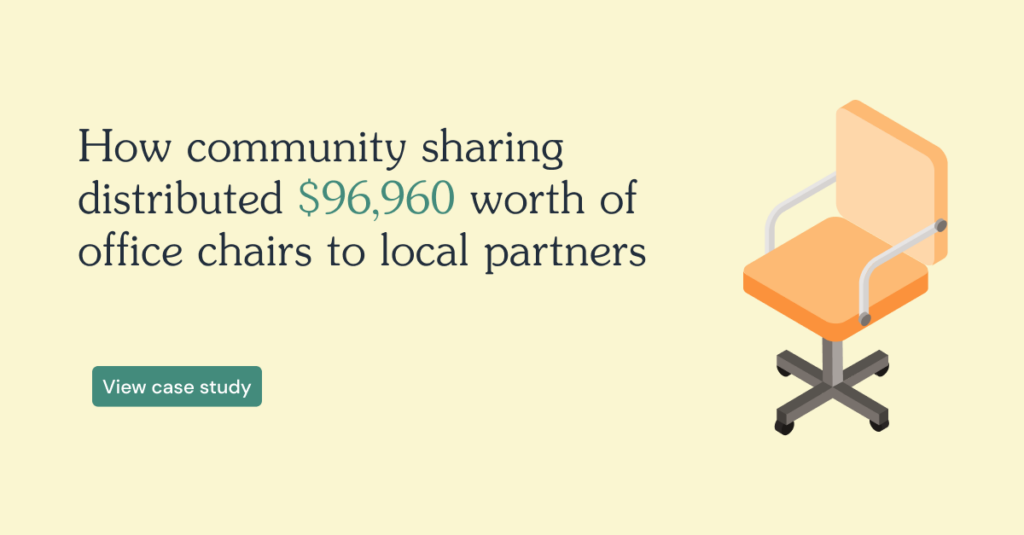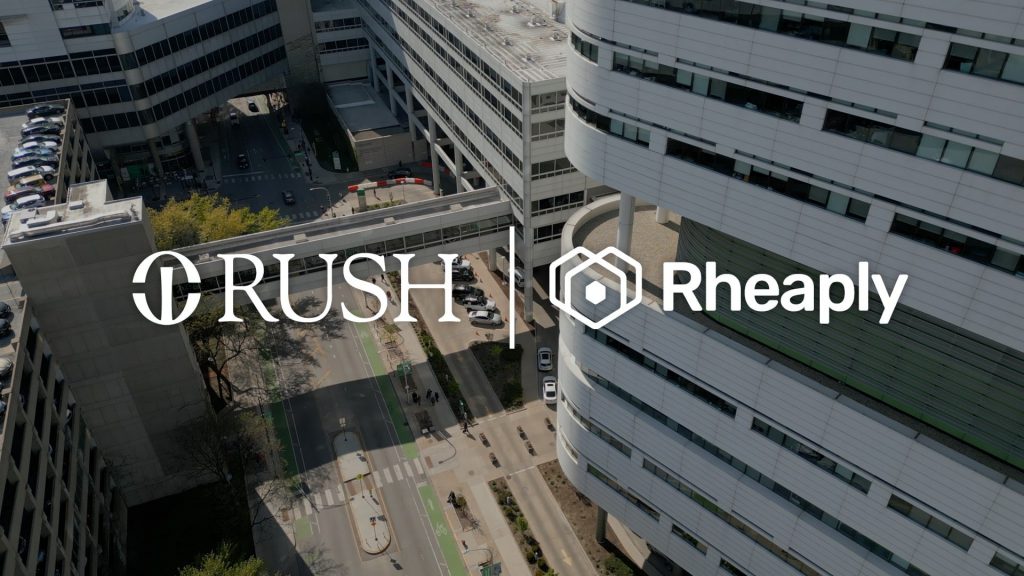IT Asset Inventory Software
Rheaply puts reuse on the table for every organization.
IT Asset Inventory Software
The rapid advancements in technology over the past few decades have led to exponential growth in the number of IT assets owned and managed by businesses. As organizations become increasingly dependent on technology for their day-to-day operations, the importance of managing these assets efficiently and sustainably cannot be overstated. This has led to a growing demand for IT asset inventory software.
Software like this helps organizations monitor and optimize their IT assets. The best asset management software comes equipped with a wide range of features that cater to the unique needs of different businesses, allowing them to seamlessly manage their entire IT inventory. This might include tracking hardware and software assets, monitoring license compliance, and ensuring efficient allocation of resources.
One of the primary reasons behind this surging demand for IT asset inventory software is the need for greater visibility into organizations’ IT infrastructure. As businesses expand, it becomes difficult to manually track and manage devices, software, and licenses. IT asset management tools automate this process, providing organizations with a centralized platform that offers a clear overview of their entire IT inventory.
Another critical factor driving the demand for asset management software is cost savings. An efficient IT asset management system allows businesses to optimize their hardware and software usage, reducing unnecessary expenses. By identifying underutilized assets and reallocating them as needed, companies can significantly cut down on wastage and maximize their return on investment.
Sustainability is also contributing to the popularity of IT inventory software. With more businesses becoming conscious of their environmental impact, sustainable IT asset management and solutions have gained prominence. Companies that reduce their energy usage and e-waste minimize their ecological footprint and save on energy costs in the long term.
Additionally, IT asset inventory software improves overall business efficiency by streamlining IT asset management processes. It enables organizations to automate time-consuming tasks, such as asset tracking and license management, freeing up valuable time and resources for more strategic initiatives.
IT Asset Management
The circular economy represents a paradigm shift in the way businesses approach resource utilization. It emphasizes sustainable practices that minimize waste, maximize resource utilization, and extend the life of products. By integrating circular economy principles with IT asset management, businesses can significantly cut costs and promote long-term sustainability. IT asset inventory software plays an important role in this transition.
One of the key principles of the circular economy is maximizing resource use. IT asset inventory software enables businesses to do just that by providing a comprehensive overview of their entire IT inventory. This allows organizations to identify underutilized assets and reallocate them as needed, ensuring that resources are used to their full potential. This is an excellent way for companies to reduce their carbon footprint.
Another critical aspect of the circular economy is the implementation of reuse strategies. IT asset inventory software facilitates this by tracking the lifecycle of IT assets, from procurement to disposal. With detailed information on the age and condition of each asset, businesses can make informed decisions about when to refurbish or repurpose equipment rather than simply dispose of it.
IT asset management also promotes sustainable procurement practices, a cornerstone of the circular economy. Inventory software allows businesses to track the environmental impact of their efforts and make data-driven decisions about their procurement choices. By selecting suppliers with strong environmental commitments and eco-friendly products, organizations can ensure that their IT assets have a lower environmental impact throughout their lifecycle.
While finding ways to reduce e-waste is often easier said than done, inventory software allows businesses to monitor their products’ lifecycles in real-time, simplifying the asset management process as a whole. This gives companies deeper visibility into what’s working well and what’s not so that they can adjust their strategies accordingly.
IT Asset Management Example
IT asset inventory software has emerged as a critical tool in facilitating the adoption of sustainable practices. It provides a comprehensive overview of an organization’s IT assets, thus simplifying and streamlining the entire asset lifecycle. With this software, businesses can make informed decisions and ultimately minimize their environmental footprint.
In a typical IT asset management example, a business uses various IT assets to support its daily operations. Over time, these assets may become obsolete, damaged, or underutilized. In the traditional linear economy model, these assets would often be discarded, contributing to the growing problem of e-waste. However, with the help of simple asset management software, businesses can identify opportunities for reuse or recycling.
Simple asset management software provides organizations with a user-friendly interface and real-time visibility into asset usage and end-of-life status. This enables them to contribute to a circular economy by disposing of their assets in a more sustainable way. For instance, an organization might determine that some of its older computers can be upgraded with new hardware components and reused in a different department.
What’s more, simple asset management software can facilitate the recycling process by offering insights into the most environmentally-responsible ways to dispose of IT assets. This may include partnering with certified e-waste recycling facilities that adhere to industry best practices and ensure the proper handling of hazardous materials. In this way, asset management software helps organizations incorporate sustainable practices in their IT asset management strategies.
When it comes to managing more complex IT infrastructure, infrastructure asset management software comes into play. This specialized software is designed to handle the unique challenges of managing large-scale IT infrastructure assets, such as data centers, servers, and network equipment.
Best IT Asset Management Software
Many businesses in various industries have successfully implemented inventory software to improve their IT asset management and enhance their sustainability efforts. By leveraging the best IT asset management software, these organizations have experienced significant benefits, including cost savings, reduced e-waste, and more efficient resource utilization.
One notable example is the global technology company IBM, which has effectively utilized IT asset management software to optimize its asset management processes. IBM’s Maximo Asset Management solution, recognized as one of the best IT asset management software, has made it possible for the company to streamline its IT asset management. It has also assisted clients in managing their IT infrastructure more efficiently.
Another compelling example is Adobe, a leading software company known for its creative and multimedia products. Adobe implemented IT asset inventory software to manage its vast array of software licenses and ensure compliance with relevant regulations. In doing so, the company has gained greater visibility into its software assets, thereby optimizing license allocation, cutting costs, and maintaining legal compliance.
Accenture, a global professional services company, also showcases what the successful implementation of IT asset inventory software looks like. As one of the top software asset management companies, Accenture has leveraged ServiceNow, an IT service management platform, to optimize its IT asset management processes. With the help of ServiceNow’s asset management module, Accenture has been able to track, monitor, and manage its extensive IT inventory more efficiently.
These asset management software examples demonstrate the significant impact that asset inventory software can have on businesses’ IT asset management and sustainability efforts. As more companies recognize the importance of sustainable practices, the adoption of IT asset inventory software will continue to play a vital role in driving these kinds of positive changes across industries.
Asset Management Software Vendors
Selecting the most suitable IT asset inventory software is a critical decision for businesses looking to improve their IT asset management processes. Here’s what to consider when deciding between asset management software vendors and solutions.
- Assess Your Business Requirements: Evaluate your organization’s specific needs and objectives. Consider factors such as the size of your IT inventory, the complexity of your IT infrastructure, and the level of detail required for tracking and managing assets. Also, be sure to identify the specific sustainability and circular economy goals you wish to achieve.
- Research Vendors: Once you have a clear understanding of your business requirements, begin researching asset management software vendors that offer solutions tailored to your needs. Read case studies, reviews, and testimonials to gain insights into the experiences of other businesses that have implemented their software.
- Compare Features and Capabilities: Carefully review the features and capabilities offered by each vendor to determine which solution best aligns with your business requirements and sustainability goals. Key features to consider include asset tracking and monitoring, license management, lifecycle management, reporting and analytics, and energy consumption tracking.
- Evaluate the Vendor’s Commitment to Sustainability: It’s important to choose a software vendor that demonstrates a genuine commitment to promoting sustainable practices. Investigate the vendor’s environmental policies and partnerships to ensure compatibility with your organization’s objectives.
- Consider the Total Cost of Ownership: When selecting IT asset inventory software, consider the upfront costs, as well as the total cost of ownership. This might include ongoing maintenance, support, and updates.
By following these guidelines, businesses can choose the most appropriate IT asset inventory software that supports their unique sustainability goals. With more options on the market than ever before, it has become increasingly important for businesses to do their research when implementing any new inventory solution.
Rheaply’s solutions are well-designed for a circular economy model and are built to meet a wide range of needs, from construction and demolition to energy and utilities. Partnering with Rheaply, organizations can drive greater energy efficiency and work towards a greener future.



